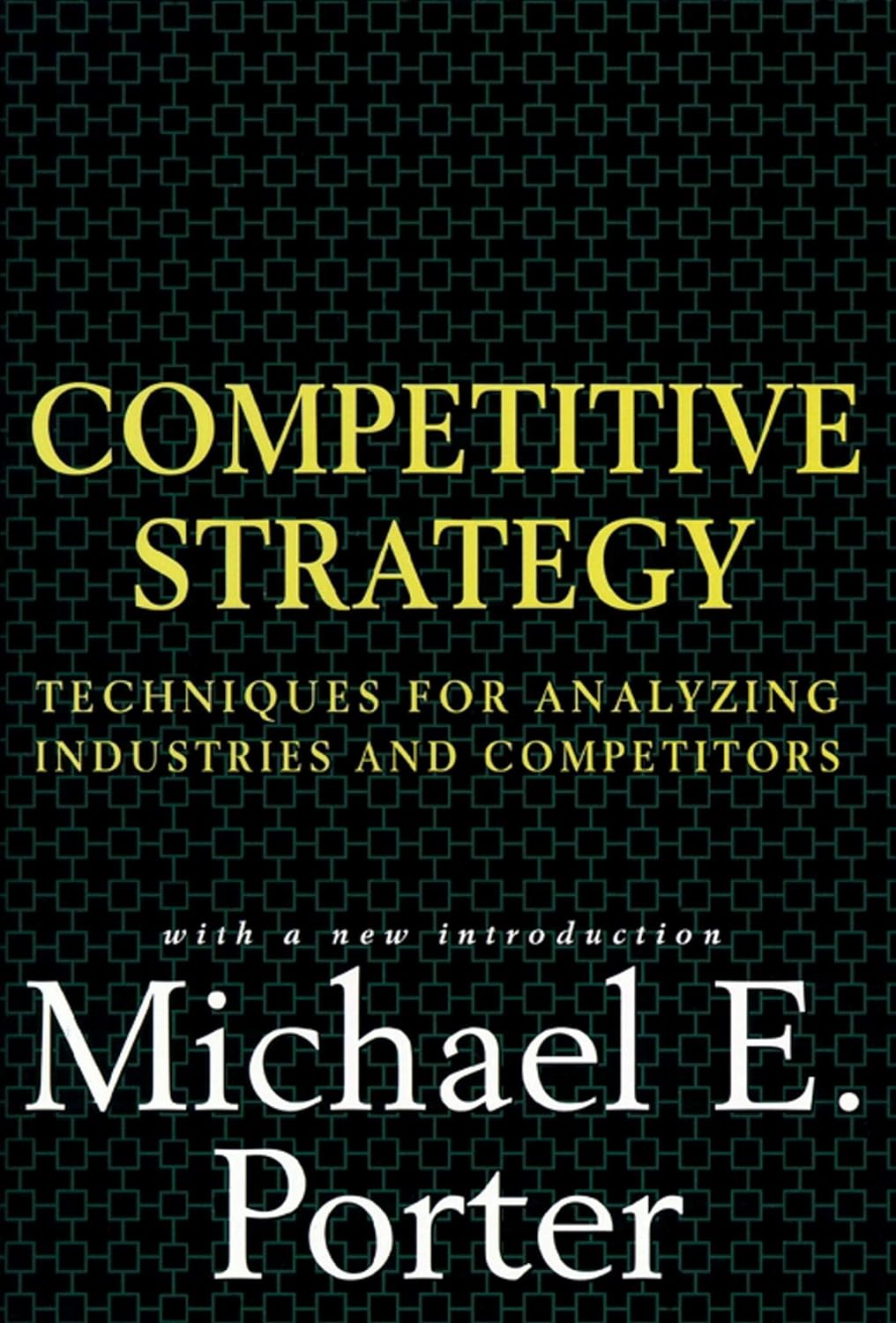Navigating the Competitive Landscape with Michael E. Porter's Framework
Michael E. Porter's seminal work provides a robust framework for analyzing industries and competitors, influencing strategic business decisions worldwide.
Subjects: Strategy
“Competitive Strategy: Techniques for Analyzing Industries and Competitors” by Michael E. Porter is a landmark book that has profoundly impacted the field of strategic business management. First published in 1980, Porter’s work introduces a comprehensive framework for evaluating the competitive forces that shape industry dynamics and guide the strategic direction of businesses. The book’s enduring relevance is a testament to its insightful analysis and practical applicability across various sectors.
Core Concepts and Frameworks: At the heart of Porter’s analysis is the Five Forces Framework, a tool that evaluates an industry’s attractiveness and potential profitability through five key factors: the bargaining power of suppliers, the bargaining power of buyers, the threat of new entrants, the threat of substitute products or services, and the intensity of competitive rivalry. Porter argues that understanding these forces allows businesses to develop strategies that exploit industry conditions to their advantage.
Beyond the Five Forces, Porter introduces the concept of the value chain, a method for dissecting a company’s activities to identify sources of competitive advantage. He emphasizes the importance of differentiation and cost leadership as strategies to outperform competitors. Moreover, Porter discusses the role of strategic groups within industries, the dynamics of competitive positioning, and the impact of market changes on strategy.
Application and Impact: What sets Porter’s book apart is not just the theoretical framework it provides but also its practical application. Porter offers numerous case studies and real-world examples to illustrate how companies can analyze their competitive environment and craft strategies that lead to sustainable competitive advantage. The book serves as a guide for business leaders, strategists, and policymakers to navigate complex industry landscapes.
The impact of Porter’s work on business strategy and management education cannot be overstated. It has become a foundational text in MBA programs worldwide and is frequently cited in academic research, strategic planning, and policy discussions. Porter’s frameworks have been applied across industries, from manufacturing to services, demonstrating their versatility and adaptability to changing business contexts.
Comparative Analysis: Compared to other strategic management texts, such as “Blue Ocean Strategy” by W. Chan Kim and Renée Mauborgne, which focuses on creating uncontested market spaces, Porter’s work emphasizes understanding and navigating existing competitive landscapes. While both approaches offer valuable insights, Porter’s analysis is particularly noteworthy for its systematic, analytical approach to competition.
Conclusion: “Competitive Strategy: Techniques for Analyzing Industries and Competitors” remains a pivotal read for anyone interested in the intricacies of strategic management. Michael E. Porter’s contributions have shaped the way we understand competition and strategy, offering tools that are both timeless and adaptable to the ever-evolving business world. His work encourages a deeper, analytical approach to strategy formulation, ensuring that businesses not only survive but thrive in their competitive environments.
Suggestions for Further Reading:
- “Understanding Michael Porter: The Essential Guide to Competition and Strategy” by Joan Magretta provides an accessible overview of Porter’s theories.
- “Good Strategy Bad Strategy: The Difference and Why It Matters” by Richard Rumelt offers complementary insights into the formulation and execution of strategy.
Follow-up Questions:
- Are there specific industries or case studies within the book that you found particularly insightful or would like a deeper analysis of?
Porter’s work is known for its broad applicability across various sectors, including manufacturing, technology, and services, providing insightful analyses on competitive dynamics. The book’s methodologies are applied to diverse industries to illustrate strategic concepts, such as the automobile industry for competitive rivalry, the pharmaceutical industry for the power of suppliers, and the airline industry for the threat of substitutes. These examples are often used to demonstrate how businesses can apply Porter’s frameworks to gain a competitive edge. If you’re interested in a deeper analysis of specific case studies or industries from the book, it could be beneficial to focus on areas that are undergoing significant changes due to technology and globalization, as these could provide contemporary insights into Porter’s enduring theories.
- How do you see Porter’s theories applying to contemporary business challenges, especially in the context of digital transformation and globalization?
Michael E. Porter’s theories, particularly the Five Forces Framework, remain highly relevant in addressing contemporary business challenges, especially amid digital transformation and globalization. In the digital era, the threat of new entrants and substitute products becomes more pronounced due to lower barriers to entry and the rapid pace of technological innovation. Globalization expands competitive rivalry on a worldwide scale, increasing the bargaining power of both suppliers and customers by broadening their choices. To navigate these challenges, companies can leverage Porter’s strategic analysis to understand their digital and global environments better, identify new sources of competitive advantage, and adapt their strategies accordingly. This approach helps businesses to not only survive but thrive by innovatively responding to changing market dynamics and leveraging digital technologies to create value.




